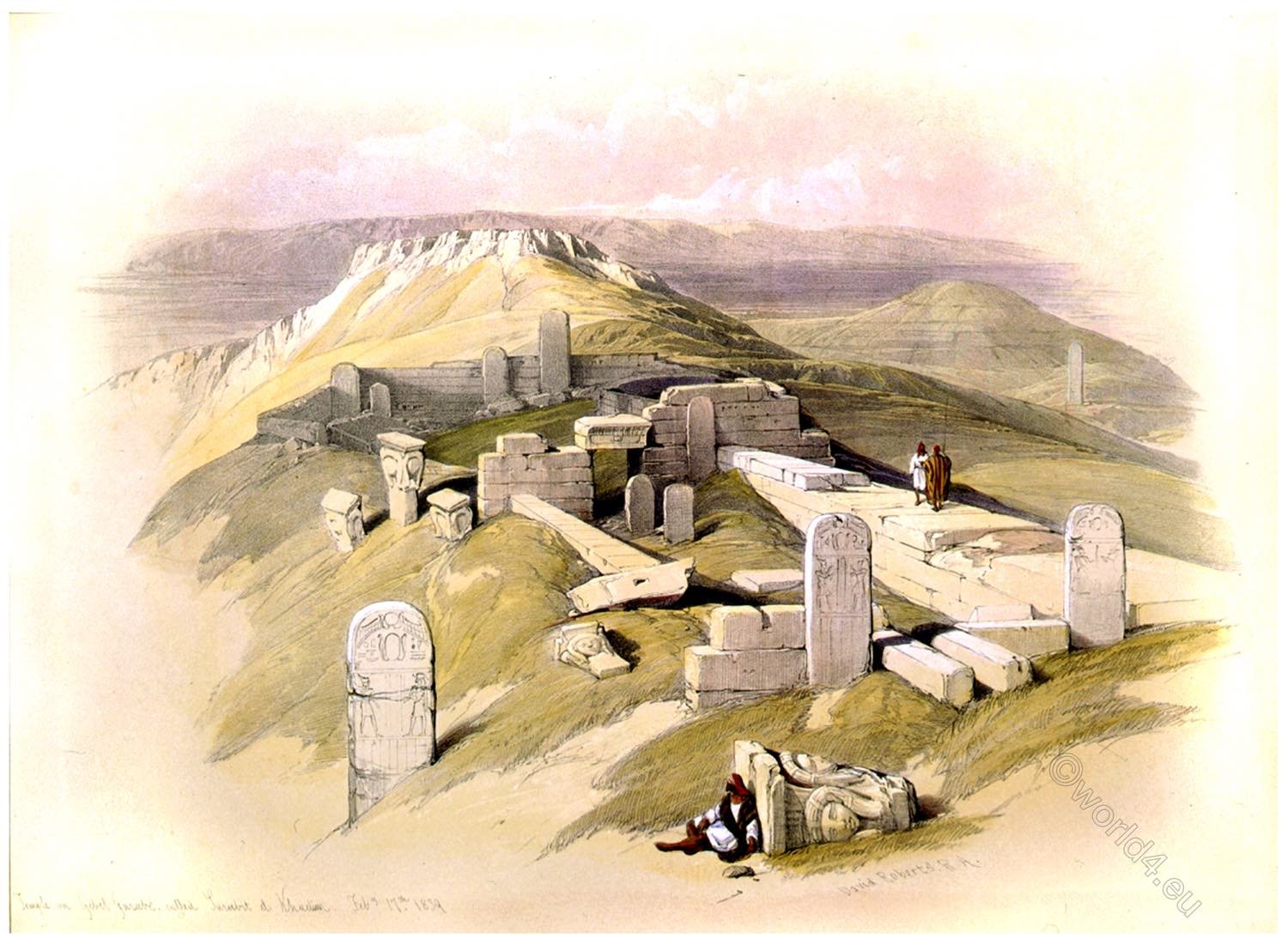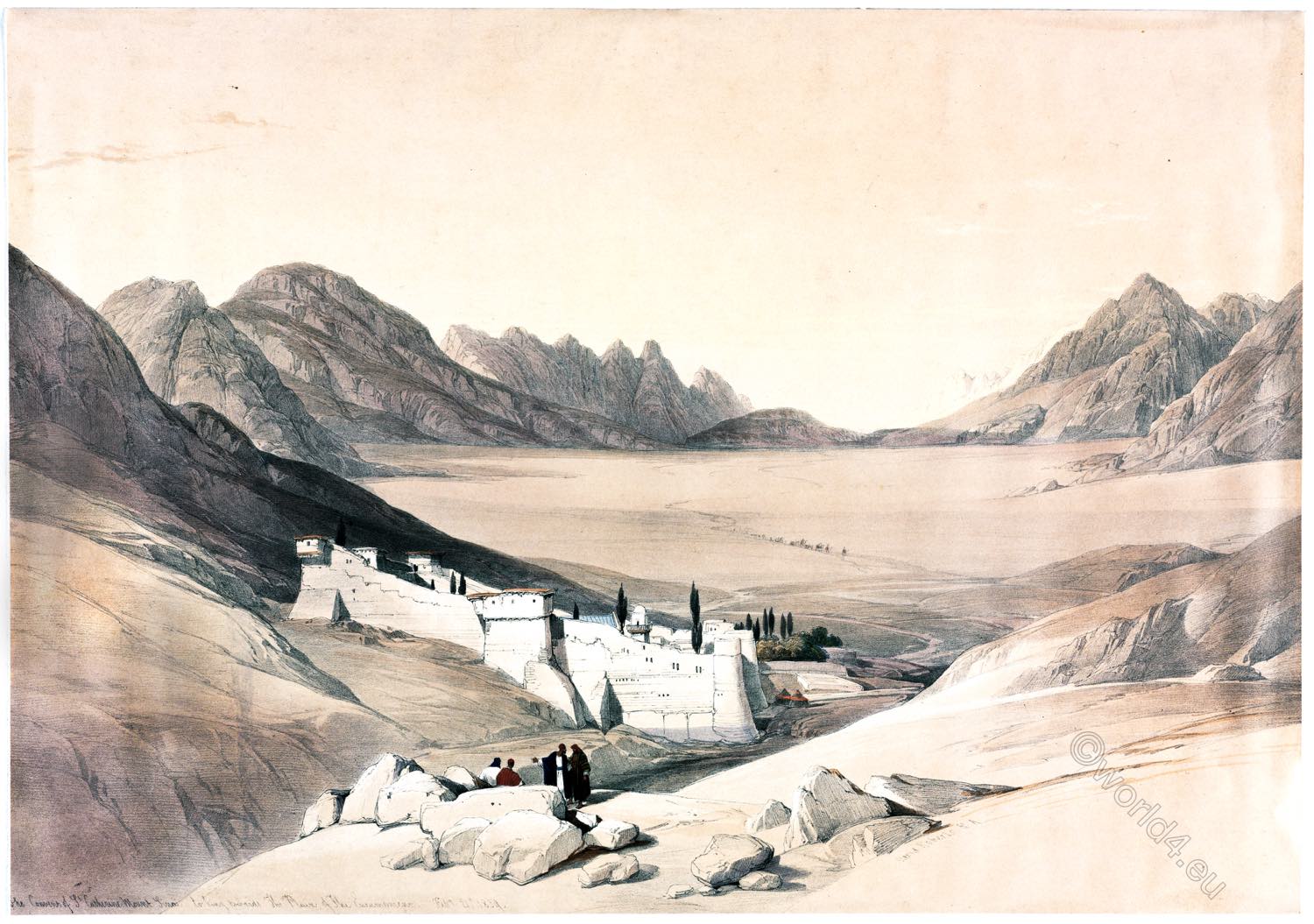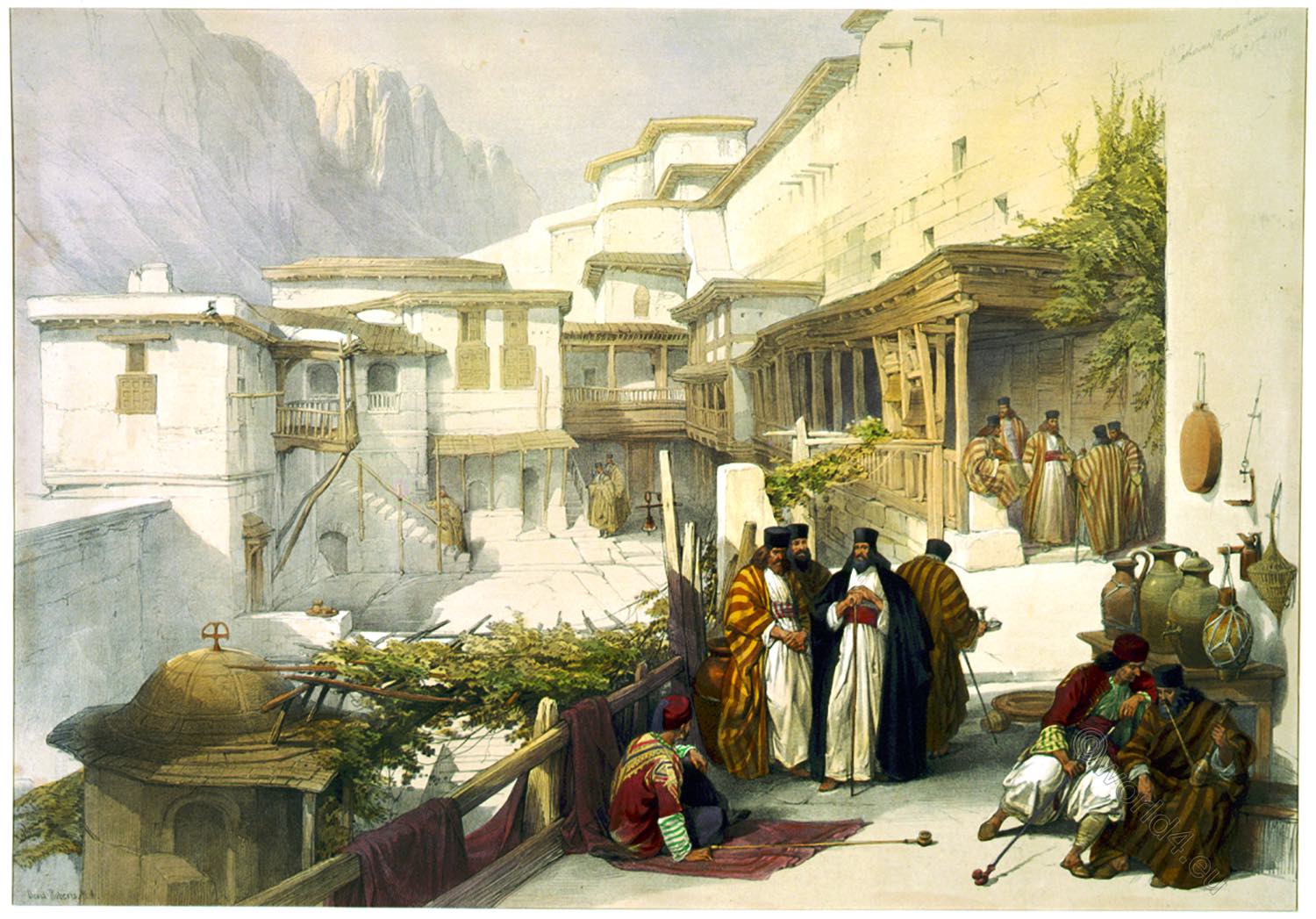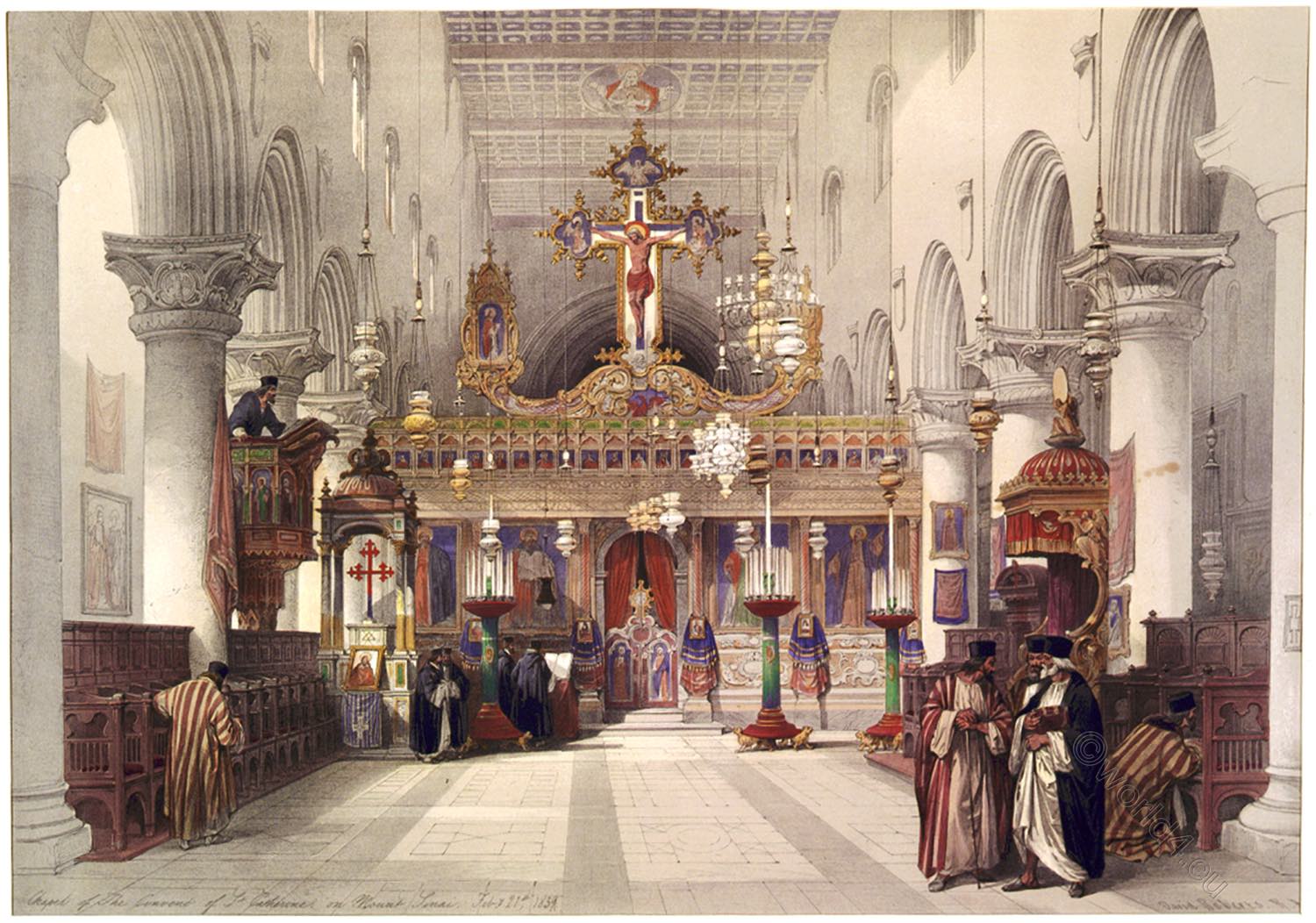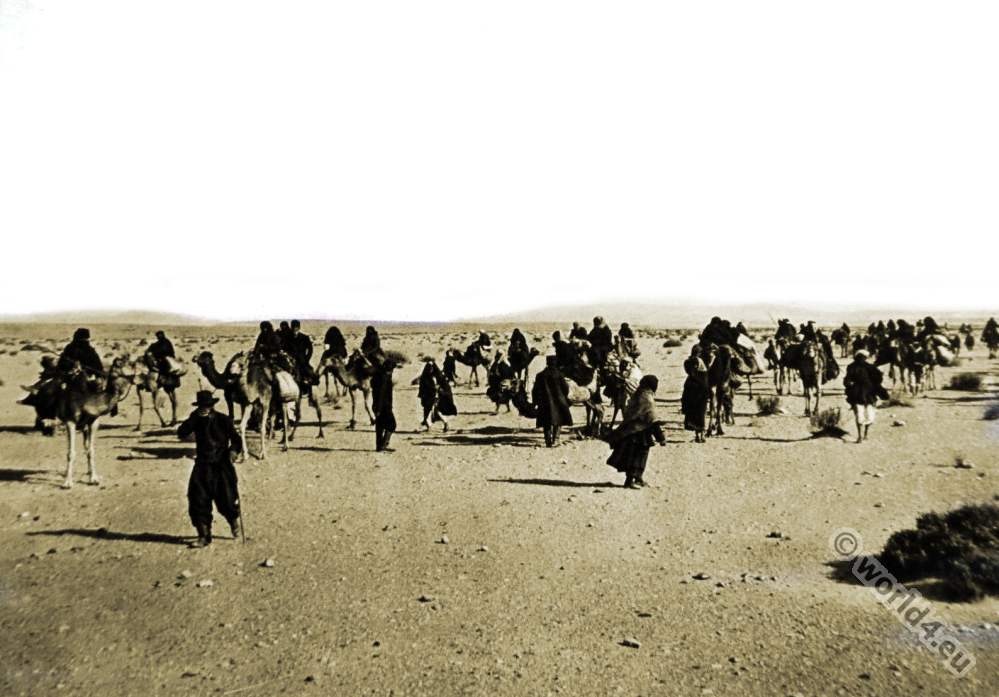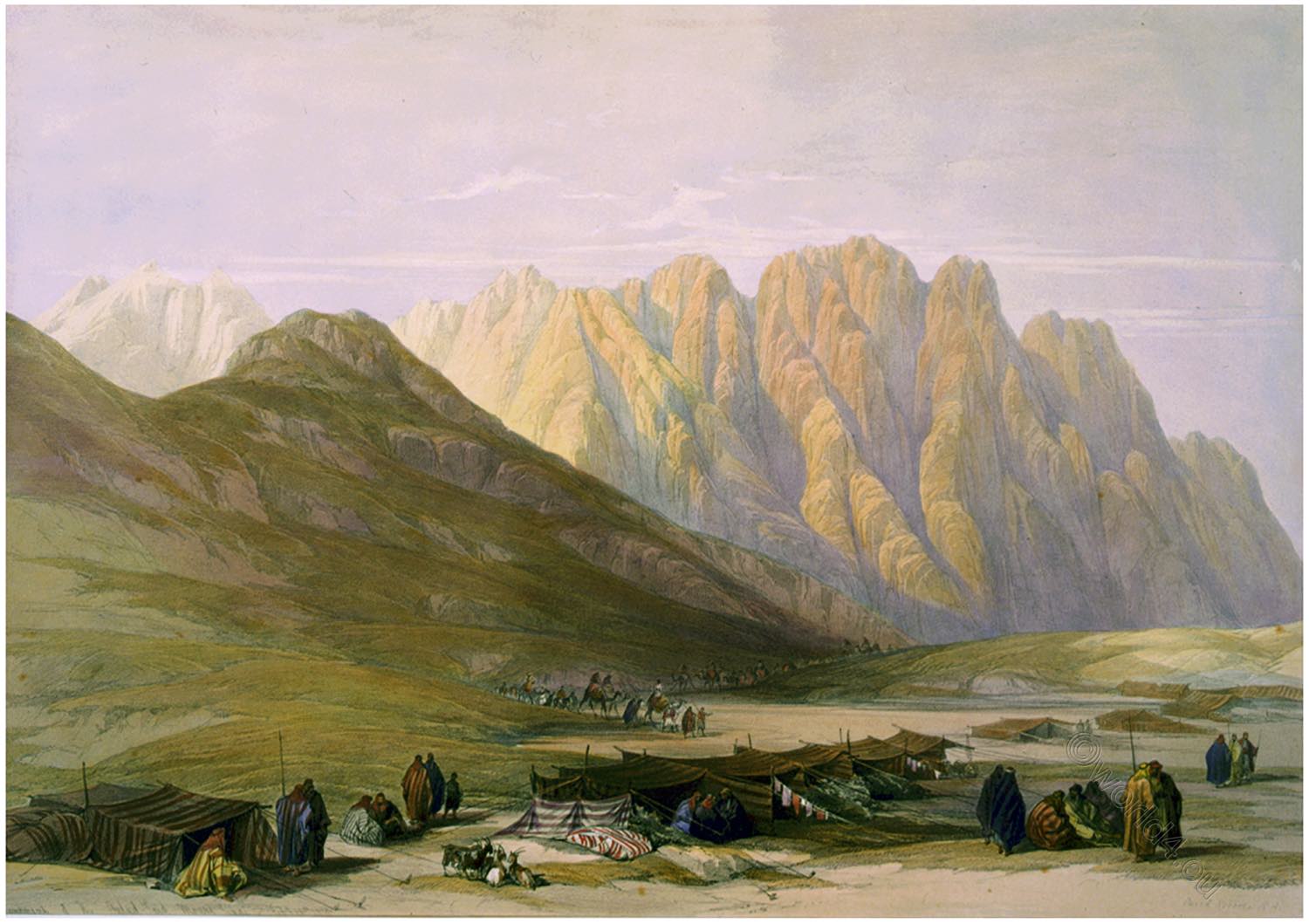
ENCAMPMENT OF THE AULAD-SA’ID
by David Roberts.
This scene represents the arrival of the caravan of the Artist and his companions, in the country, and at the tents of the Aulad-Sa’id. They were friendly with the Beni-Sa’id, under whose guidance and protection he travelled. 1) The Aulad-Sa’id were encamped close to the base of Mount Serbal.
The Mountain is red granite, without a trace of vegetation; and rises majestically to the height of five thousand feet. The powerful tribe which finds its home in this district has been the guardian of the Convent of St. Catherine, from perhaps the period of its foundation. One of the travelers on this occasion thus describes the general appearance of the Arab community.
“At five o’clock we arrived at the encampment of the Aulad-Sa’id. Our painted pavilions looked a little out of place beside the black Arab tents, which were more in character with the dark and wild mountains which formed the back-ground of the picture, and the wild figures who were moving about.
The whole scene was quite patriarchal in its character, and carried the mind back to the times when men were hunters, and shepherds in the field, and dwellers in tents.
A kid had been killed for us, and our servants were busy, cooking it at a fire in the open air : before one of the tents, two women, seated on the ground, were grinding at a small hand-mill, one turning the stone, while the other poured in the corn: at another, a girl was baking the Arab bread for us. The camels, relieved from their burthens, were cropping the scanty herbage around the tents: troops of boys and girls were driving home the goats from their pasture in the neighboring valleys; and although some of the highest peaks were still lighted by the setting sun, the moon was beginning to shed a sweet silvery light over the valley.” 2)
“Here,” says Robinson, “was a fine view of Mount Serbal: as thus seen it presents the appearance of a long, thin, lofty ridge of granite, with numerous points or peaks, of which there are reckoned five principal ones, the whole being strictly what the Germans call a Kämm. We saw it now in the bright beams of a morning sun, a grand and noble object, as its rugged peaks were defined upon the deep azure beyond. …
Here the interior peaks of the great circle of Sinai began to open upon us—black, rugged, desolate summits; and as we advanced, the dark and frowning front of Sinai itself (the present Horeb of the Monks) began to appear. We were still gradually ascending, and the valley gradually opening; but as yet all was a naked desert. Afterwards, a few shrubs were sprinkled round, and a small encampment of black tents was seen on our right, with camels and goats browsing, and some asses belonging to the Convent. The scenery through which we now passed, reminded me strongly of the Mountains around the Mer de Glace, in Switzerland. I had never seen a spot more wild and desolate.” 3)
But it is to be recollected that, although in these Sketches the customary names of the Mountains have been adopted, their claims as the sites of the Delivery of the Law have excited much learned discussion. Jebel Mousa, the Sinai of the Monks, exhibits features incompatible with the Sacred History; Jebel Katerin, the loftier peak of Horeb (which is now regarded as the original name of the range), seems scarcely less incompatible. It has been strongly argued, 4) that the true Mountain of the Law was Mount Serbal, anciently named Paran; the most conspicuous, and the first, object in the entrance to the Wilderness; a Mountain, wholly separate, of sublime elevation, and of the most striking form and magnitude.
To a people whose entire living generation had seen only the level lands of Egypt, the Israelite march into this region of mountain magnificence, with its sharp and splintered peaks and profound valleys, must have been a perpetual source of astonishment and awe. No nobler school could have been conceived, for training a nation of slaves into a nation of freemen, or -weaning a people from the grossness of idolatry to a sense of the grandeur and power of the God alike of Nature and Mind.
1) Roberts’s Journal. 2) Kinnear’s Cairo, Petra, and Damascus. 3) Biblical Researches, i. 125, 130. 4) Note in the Pictorial Bible.
Source: The Holy Land, Syria, Idumea, Arabia, Egypt, & Nubia, by David Roberts (British, 1796-1864), George Croly, William Brockedon. London: Lithographed, printed and published by Day & Son, lithographers to the Queen. Cate Street, Lincoln’s Inn Fields, 1855.
Continuing
Discover more from World4 Costume Culture History
Subscribe to get the latest posts sent to your email.

